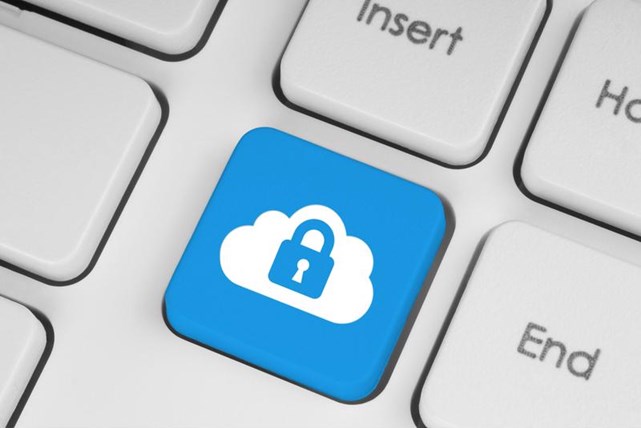As one of the largest generations in American history, millennials will reshape healthcare at least as extensively as baby boomers already have:
- Baby boomer retirements are rapidly expanding overall Medicare enrollment; the Centers for Medicare and Medicaid have predicted that federal, state and local governments will be the strongest sources of new U.S. healthcare spending from 2016-2025.
- Meanwhile, millennials are introducing new expectations for how providers and payers interact with patients, and they are also reinventing the roles of mobile devices and cloud computing. In the long term, they too will greatly increase the size of both Medicare and Medicaid.
In part one of this series, we looked at how millennials have brought smartphones and Software-as-a-Service (SaaS) – both of which hit the mainstream at the same time many millennials entered adulthood, in the late 2000s – to the forefront of healthcare. For example, cloud software now offers an appealing alternative to traditional claims systems, as well as a scalable platform for mobile scheduling apps.
Here we will examine the insurance/payment side. The status quos in both claims and billing are at odds with what millennials have come to expect from on-demand services such as Lyft, Airbnb and iOS Maps. In other words, they are characterized by outdated hardware and software and counterintuitive user experiences.
Obstacles to overcome
Current financial and customer service systems have significant limitations. Three of the most prominent are:
1. Legacy technologies
Startup payers such as Oscar Health have gained traction by “owning the stack” when it comes to its claims processing tech. This term implies full control over all components of the system, from the servers that support backend IT operations, to the individual applications for claims processing, benefits adjudication and member data verification.
In contrast, a lot of claims software and hardware still in use is decades old and not optimized for smooth interconnection with other health information systems. Accordingly, it is costly to maintain for payers, especially as interoperability becomes an industry-wide concern, not to mention difficult to navigate for members.

Millennials are used to researching and making payments via smartphones.
Improved interoperability has been a priority in the shift toward electronic health records and in the adoption of legislation such as the 21st Century Cures Act that disincentivizes data blocking. For millennials, relatively easy data exchange between interoperable systems has long been the norm when performing tasks such as signing into websites using their social media accounts. However, their interactions with payers often result in having to call for help or struggling to make sense of disconnected data points such as lab results and claims.
2. Payment method fragmentation
Millennials are accustomed to paying for products and services with NFC-enabled devices and platforms such as PayPal. In this context, it is no surprise that convenient electronic payment methods are generally popular and in great demand in healthcare: An InstaMed study found that 77 percent of patients preferred them, while 64 percent were interested in options like Apple Pay.
Such convenience has become a bigger priority for providers, too. Almost three-fourths of the InstaMed respondents reported increases in patient financial responsibility in 2015, due to the rising purchases of high-deductible plans with significant out-of-pocket costs. Paying for care must become a more consumer-friendly experience, even before factoring in millennial expectations.
But modern forms of payment are still in their infancy. The Federal Register revealed in 2013 that while a supermajority of payments and documentation for Medicare was sent electronically, neither Medicaid, commercial insurers nor the health system at large cleared 40 percent on these marks.
3. Complexity for consumers
The shortcomings of the current billing and payment processes are not limited to IT infrastructure. Medical bills themselves are notoriously complex, and millennials have confronted the problems that such complicated paper trails can create.
A 2015 PricewaterhouseCoopers survey found that 17 percent of respondents ages 18 to 24, and 21 percent of ages 25 to 34, had asked for a price check on treatments, compared to only 10 percent of the general population. This desire for transparency has spurred hospitals and payers to explore more straightforward billing practices via mobile apps, web portals and price comparison tools.
Healthcare SaaS and a Cloud-like experience
How can these challenges be overcome? Start with simplification of provider and payer infrastructure, to align it with the cloud-based systems millennials take for granted. SaaS is a powerful solution here, benefiting all stakeholders in the healthcare system:
- SaaS is flexible and scalable, making it ideal for customized workflows and integrations with other systems containing information relevant to a claim lifecycle.
- It is supported by remote infrastructure, which is typically more secure and advanced than on-premises equivalents.
- It is always up-to-date, eliminating the common dilemma of waiting so long to update a system that it actually becomes costlier to maintain it than to replace it outright.
- The intuitive interfaces of SaaS tools reduce payer reliance on specific employees who know the ropes of their existing complex systems.
Providers get more interoperable infrastructure, payers get sustainable modern claims processing and patients get a straightforward consumer experience. SaaS can help meet millennial expectations for healthcare system experiences, although additional steps are needed to simplify bills.
Transparent billing
Patients receive an average of 3.3 bills before their balances are paid in full, according to the Medical Group Management Association. Consolidation of bills is an obvious, if challenging, goal, and organizations such as Health Payment Systems are working on it.
A “one bill for everything” solution would resemble experiences millennials have when using services such as Google and Amazon. Both platforms consolidate complex streams of conflicting information – search results and prices, respectively – into definitive “answers” presented in on-screen boxes.

The cloud will continue to replace legacy software systems.
Mobile billing and price comparison tools could fuel progress toward a healthcare equivalent of these internet services. For example, one Atlanta-based startup made waves by charging a flat $100 fee for a telemedicine consultation with doctors, sidestepping the complex claims process (it did not accept insurance) and offering the transparent pricing millennials expect upfront.
How else will millennials reshape the healthcare system?
Millennials are driving major changes in how healthcare is delivered, billed and paid for. We have focused on technology, claims and billing in the first half of this series, but we still have plenty of ground to cover in other areas such as millennial attitudes toward retail clinics and online provider reviews. The next entry will focus on how millennials are affecting healthcare beyond technological innovations and new payment methods.
As the industry evolves in these many different ways, AMR is committed to a professional environment mindful of millennial expectations. Our extensive online presence and broad portfolio of services are designed to ensure transparency, accuracy and value for all our employees and clients.
Sign up for Updates:
Privacy Details
By submitting this form, you are consenting to receive marketing emails from: Advanced Medical Reviews, LLC. You can revoke your consent to receive emails at any time by using the Unsubscribe link, found at the bottom of every email.
